Liwei Wang
N3C Natural Language Processing
Development of Clinical Concept Extraction Applications: A Methodology Review
Oct 28, 2019
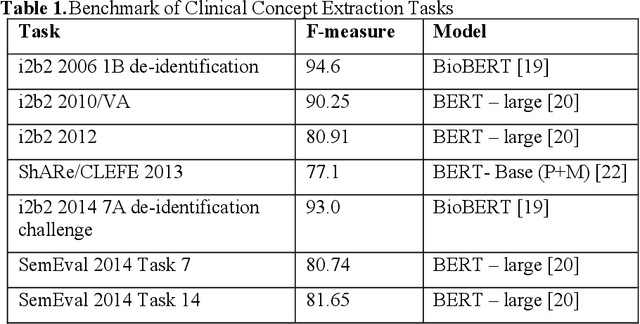
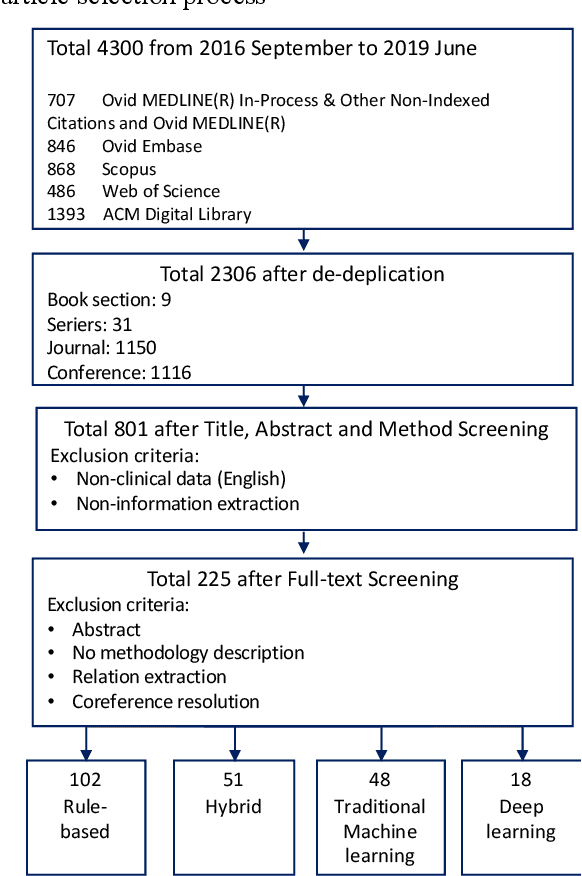
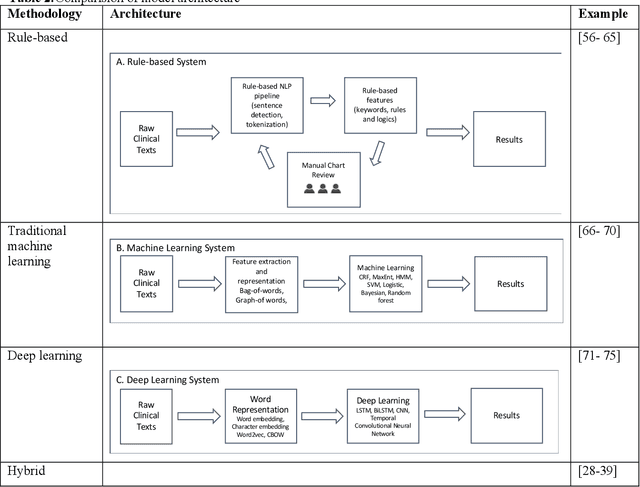
Abstract:Our study provided a review of the development of clinical concept extraction applications from January 2009 to June 2019. We hope, through the studying of different approaches with variant clinical context, can enhance the decision making for the development of clinical concept extraction.
On the Anomalous Generalization of GANs
Oct 06, 2019


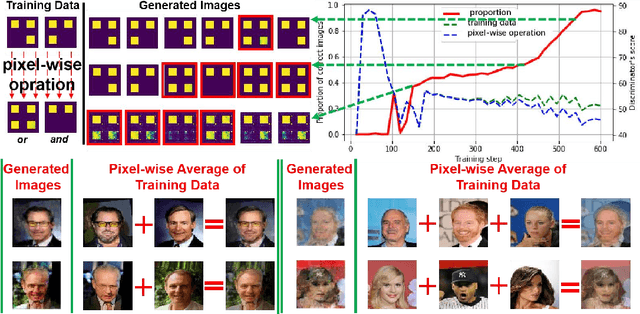
Abstract:Generative models, especially Generative Adversarial Networks (GANs), have received significant attention recently. However, it has been observed that in terms of some attributes, e.g. the number of simple geometric primitives in an image, GANs are not able to learn the target distribution in practice. Motivated by this observation, we discover two specific problems of GANs leading to anomalous generalization behaviour, which we refer to as the sample insufficiency and the pixel-wise combination. For the first problem of sample insufficiency, we show theoretically and empirically that the batchsize of the training samples in practice may be insufficient for the discriminator to learn an accurate discrimination function. It could result in unstable training dynamics for the generator, leading to anomalous generalization. For the second problem of pixel-wise combination, we find that besides recognizing the positive training samples as real, under certain circumstances, the discriminator could be fooled to recognize the pixel-wise combinations (e.g. pixel-wise average) of the positive training samples as real. However, those combinations could be visually different from the real samples in the target distribution. With the fooled discriminator as reference, the generator would obtain biased supervision further, leading to the anomalous generalization behaviour. Additionally, in this paper, we propose methods to mitigate the anomalous generalization of GANs. Extensive experiments on benchmark show our proposed methods improve the FID score up to 30\% on natural image dataset.
Robust Local Features for Improving the Generalization of Adversarial Training
Sep 23, 2019


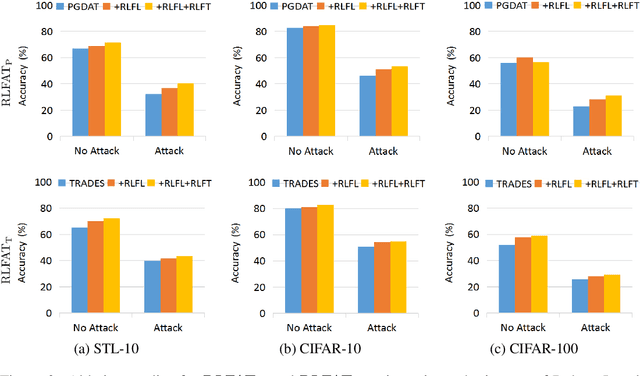
Abstract:Adversarial training has been demonstrated as one of the most effective methods for training robust models so as to defend against adversarial examples. However, adversarial training often lacks adversarially robust generalization on unseen data. Recent works show that adversarially trained models may be more biased towards global structure features. Instead, in this work, we would like to investigate the relationship between the generalization of adversarial training and the robust local features, as the local features generalize well for unseen shape variation. To learn the robust local features, we develop a Random Block Shuffle (RBS) transformation to break up the global structure features on normal adversarial examples. We continue to propose a new approach called Robust Local Features for Adversarial Training (RLFAT), which first learns the robust local features by adversarial training on the RBS-transformed adversarial examples, and then transfers the robust local features into the training of normal adversarial examples. Finally, we implement RLFAT in two currently state-of-the-art adversarial training frameworks. Extensive experiments on STL-10, CIFAR-10, CIFAR-100 datasets show that RLFAT improves the adversarially robust generalization as well as the standard generalization of adversarial training. Additionally, we demonstrate that our method captures more local features of the object, aligning better with human perception.
Hint-Based Training for Non-Autoregressive Machine Translation
Sep 15, 2019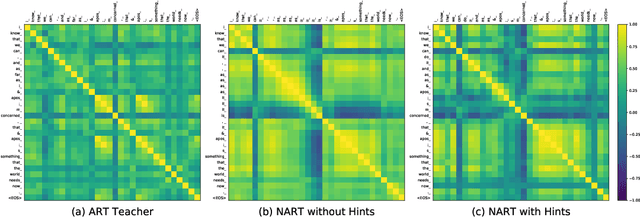
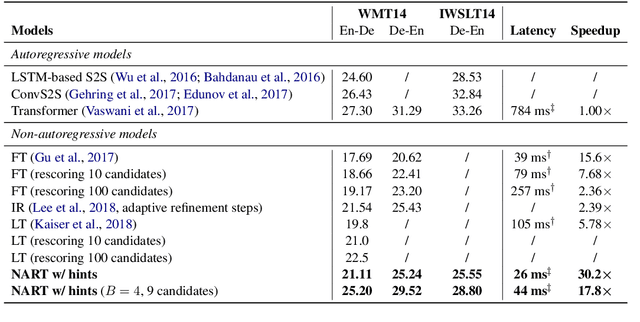
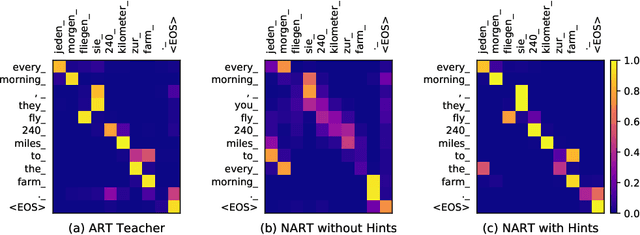

Abstract:Due to the unparallelizable nature of the autoregressive factorization, AutoRegressive Translation (ART) models have to generate tokens sequentially during decoding and thus suffer from high inference latency. Non-AutoRegressive Translation (NART) models were proposed to reduce the inference time, but could only achieve inferior translation accuracy. In this paper, we proposed a novel approach to leveraging the hints from hidden states and word alignments to help the training of NART models. The results achieve significant improvement over previous NART models for the WMT14 En-De and De-En datasets and are even comparable to a strong LSTM-based ART baseline but one order of magnitude faster in inference.
McDiarmid-Type Inequalities for Graph-Dependent Variables and Stability Bounds
Sep 09, 2019
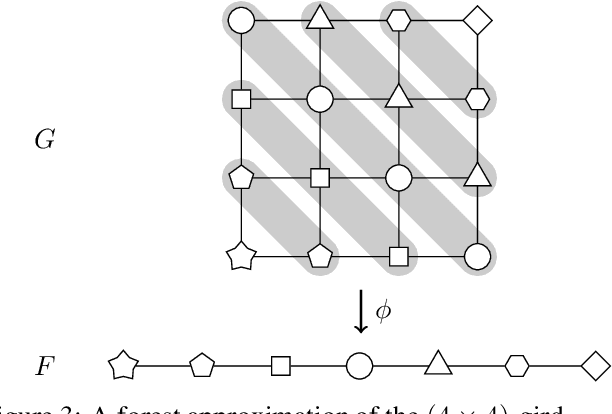
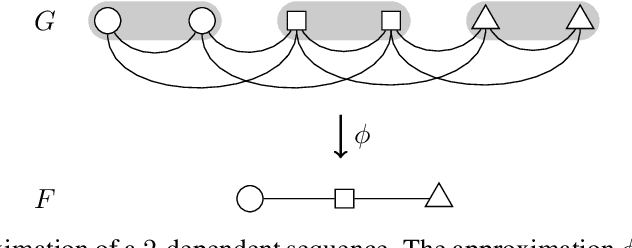
Abstract:A crucial assumption in most statistical learning theory is that samples are independently and identically distributed (i.i.d.). However, for many real applications, the i.i.d. assumption does not hold. We consider learning problems in which examples are dependent and their dependency relation is characterized by a graph. To establish algorithm-dependent generalization theory for learning with non-i.i.d. data, we first prove novel McDiarmid-type concentration inequalities for Lipschitz functions of graph-dependent random variables. We show that concentration relies on the forest complexity of the graph, which characterizes the strength of the dependency. We demonstrate that for many types of dependent data, the forest complexity is small and thus implies good concentration. Based on our new inequalities we are able to build stability bounds for learning from graph-dependent data.
A Fast and Accurate One-Stage Approach to Visual Grounding
Aug 18, 2019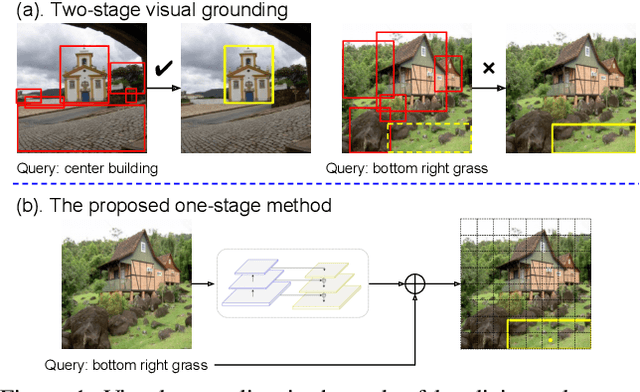
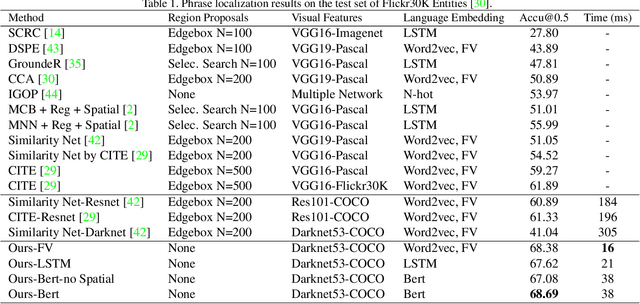
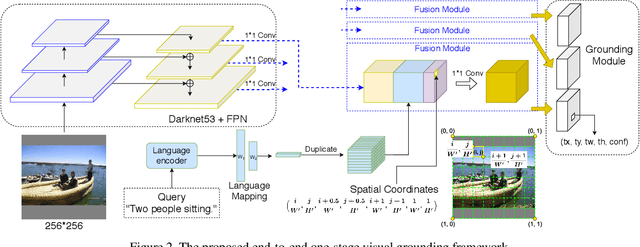
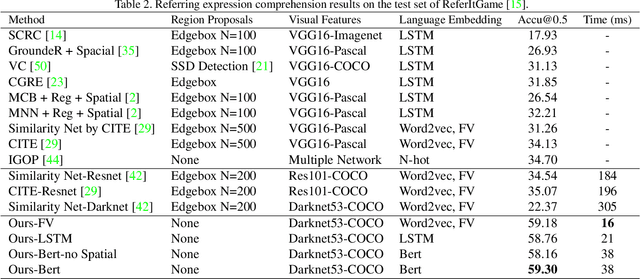
Abstract:We propose a simple, fast, and accurate one-stage approach to visual grounding, inspired by the following insight. The performances of existing propose-and-rank two-stage methods are capped by the quality of the region candidates they propose in the first stage --- if none of the candidates could cover the ground truth region, there is no hope in the second stage to rank the right region to the top. To avoid this caveat, we propose a one-stage model that enables end-to-end joint optimization. The main idea is as straightforward as fusing a text query's embedding into the YOLOv3 object detector, augmented by spatial features so as to account for spatial mentions in the query. Despite being simple, this one-stage approach shows great potential in terms of both accuracy and speed for both phrase localization and referring expression comprehension, according to our experiments. Given these results along with careful investigations into some popular region proposals, we advocate for visual grounding a paradigm shift from the conventional two-stage methods to the one-stage framework.
Nesterov Accelerated Gradient and Scale Invariance for Improving Transferability of Adversarial Examples
Aug 17, 2019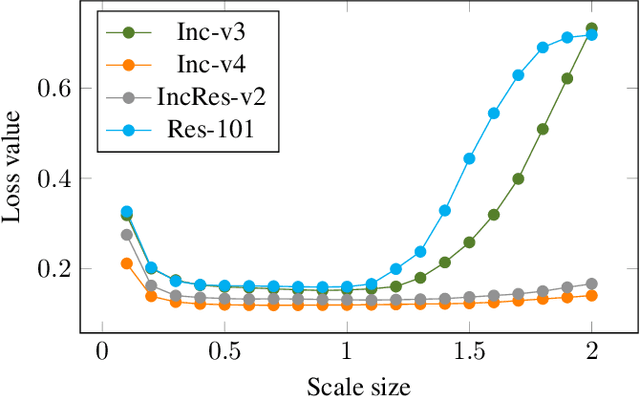

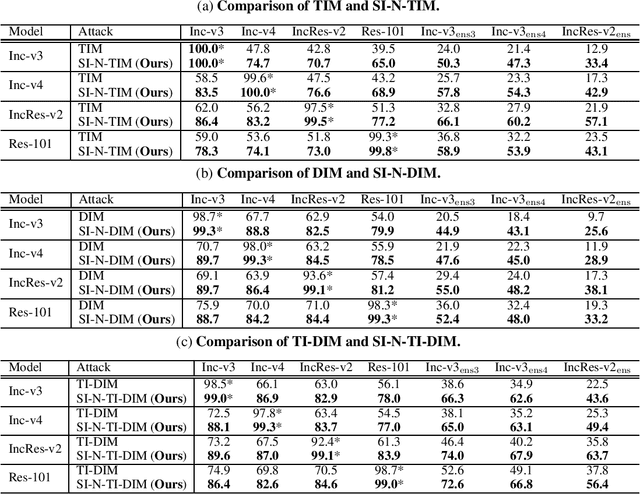

Abstract:Recent evidence suggests that deep neural networks (DNNs) are vulnerable to adversarial examples, which are crafted by adding human-imperceptible perturbations to legitimate examples. However, most of the existing adversarial attacks generate adversarial examples with weak transferability, making it difficult to evaluate the robustness of DNNs under the challenging black-box setting. To address this issue, we propose two methods: Nesterov momentum iterative fast gradient sign method (N-MI-FGSM) and scale-invariant attack method (SIM), to improve the transferability of adversarial examples. N-MI-FGSM tries a better optimizer by applying the idea of Nesterov accelerated gradient to gradient-based attack method. SIM leverages the scale-invariant property of DNNs and optimizes the generated adversarial example by a set of scaled images as the inputs. Further, the two methods can be naturally combined to form a strong attack and enhance existing gradient attack methods. Empirical results on ImageNet and NIPS 2017 adversarial competition show that the proposed methods can generate adversarial examples with higher transferability than existing competing baselines.
Few-Shot Learning with Global Class Representations
Aug 14, 2019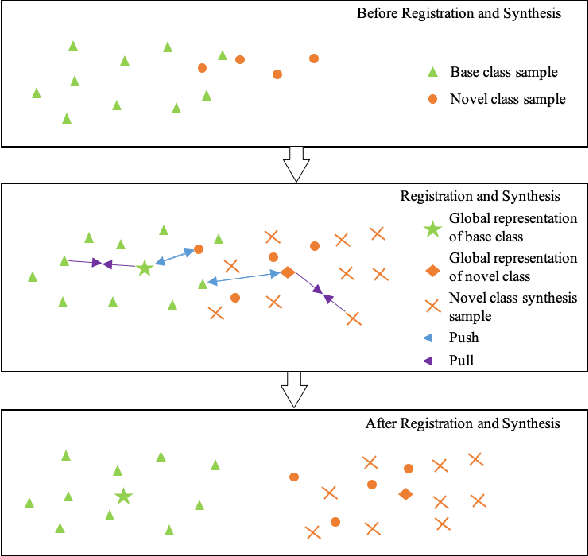
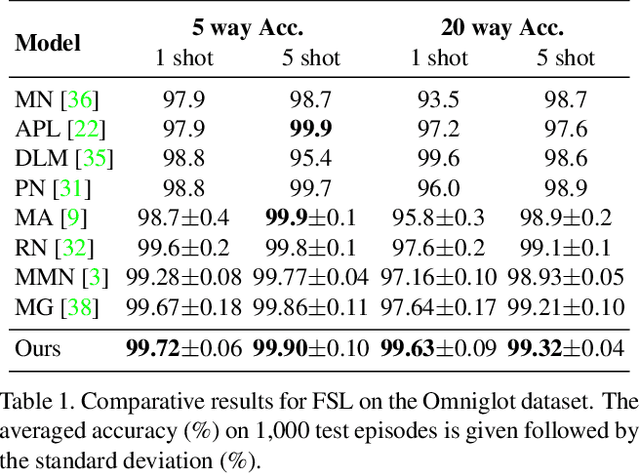

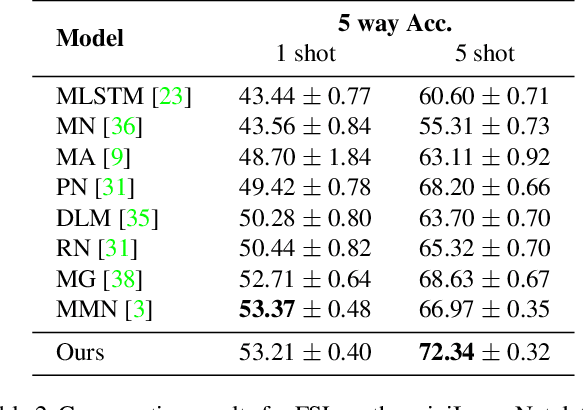
Abstract:In this paper, we propose to tackle the challenging few-shot learning (FSL) problem by learning global class representations using both base and novel class training samples. In each training episode, an episodic class mean computed from a support set is registered with the global representation via a registration module. This produces a registered global class representation for computing the classification loss using a query set. Though following a similar episodic training pipeline as existing meta learning based approaches, our method differs significantly in that novel class training samples are involved in the training from the beginning. To compensate for the lack of novel class training samples, an effective sample synthesis strategy is developed to avoid overfitting. Importantly, by joint base-novel class training, our approach can be easily extended to a more practical yet challenging FSL setting, i.e., generalized FSL, where the label space of test data is extended to both base and novel classes. Extensive experiments show that our approach is effective for both of the two FSL settings.
Representation Degeneration Problem in Training Natural Language Generation Models
Jul 28, 2019
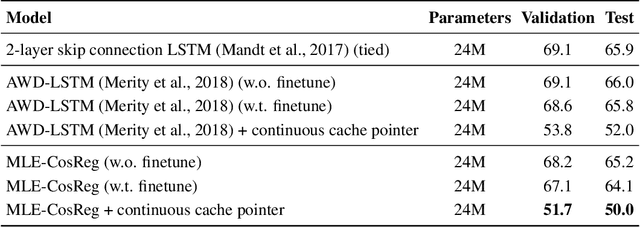

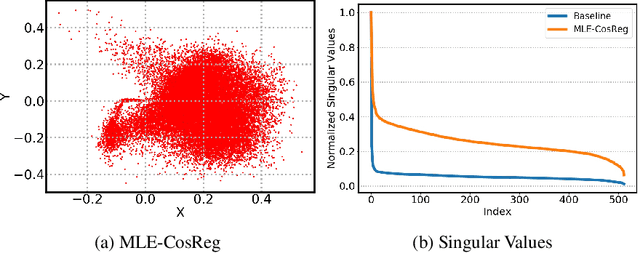
Abstract:We study an interesting problem in training neural network-based models for natural language generation tasks, which we call the \emph{representation degeneration problem}. We observe that when training a model for natural language generation tasks through likelihood maximization with the weight tying trick, especially with big training datasets, most of the learnt word embeddings tend to degenerate and be distributed into a narrow cone, which largely limits the representation power of word embeddings. We analyze the conditions and causes of this problem and propose a novel regularization method to address it. Experiments on language modeling and machine translation show that our method can largely mitigate the representation degeneration problem and achieve better performance than baseline algorithms.
Cross-lingual Data Transformation and Combination for Text Classification
Jun 23, 2019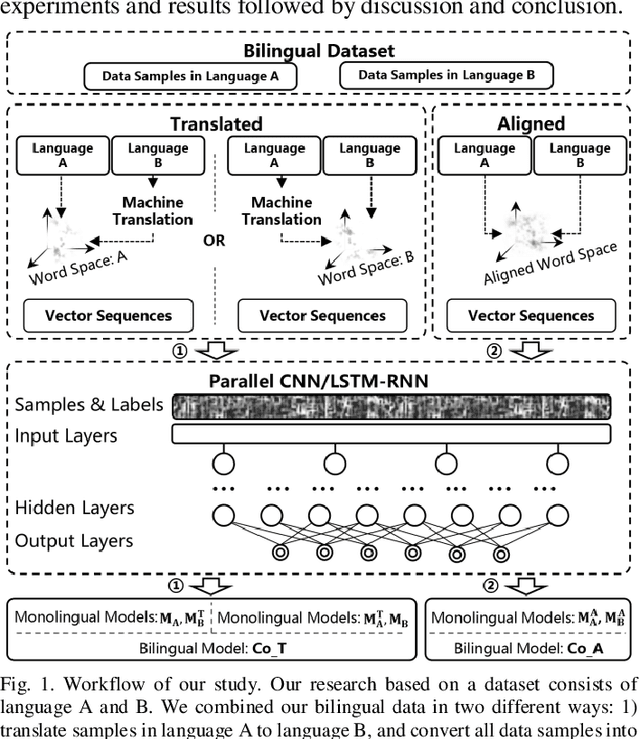
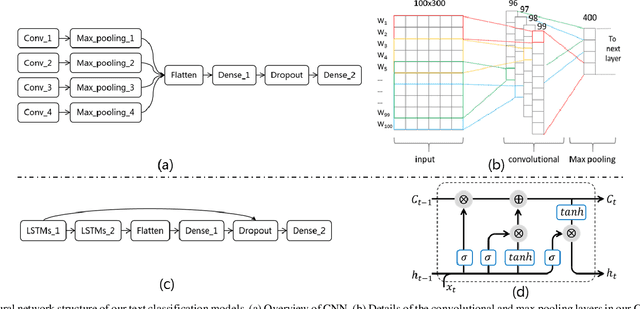
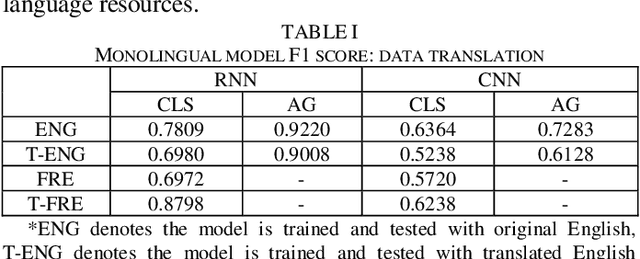
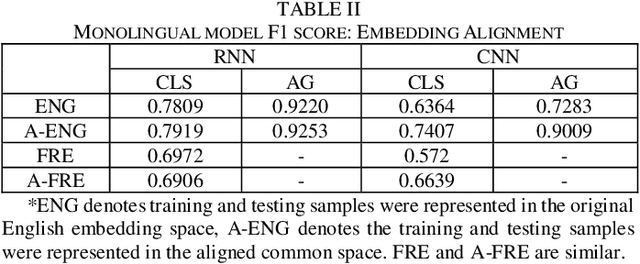
Abstract:Text classification is a fundamental task for text data mining. In order to train a generalizable model, a large volume of text must be collected. To address data insufficiency, cross-lingual data may occasionally be necessary. Cross-lingual data sources may however suffer from data incompatibility, as text written in different languages can hold distinct word sequences and semantic patterns. Machine translation and word embedding alignment provide an effective way to transform and combine data for cross-lingual data training. To the best of our knowledge, there has been little work done on evaluating how the methodology used to conduct semantic space transformation and data combination affects the performance of classification models trained from cross-lingual resources. In this paper, we systematically evaluated the performance of two commonly used CNN (Convolutional Neural Network) and RNN (Recurrent Neural Network) text classifiers with differing data transformation and combination strategies. Monolingual models were trained from English and French alongside their translated and aligned embeddings. Our results suggested that semantic space transformation may conditionally promote the performance of monolingual models. Bilingual models were trained from a combination of both English and French. Our results indicate that a cross-lingual classification model can significantly benefit from cross-lingual data by learning from translated or aligned embedding spaces.
 Add to Chrome
Add to Chrome Add to Firefox
Add to Firefox Add to Edge
Add to Edge